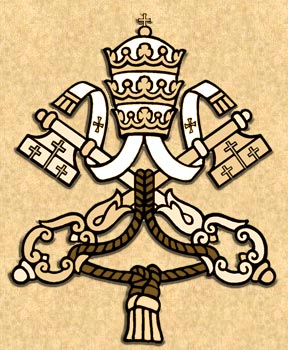Seneschal, courtier and troubador at the court of King James of Aragon from about 1246. Married Blanca Picany in 1257. In 1263 he received a vision of Christ crucified, and was converted on the spot.
Franciscan tertiary. Friend of Raymond of Penyafort. Worked to convert Muslims in the Iberian peninsula, and then in north Africa. He tried to interest the Vatican and assorted European royal courts in this work, travelling throughout Italy, France, England and Germany in search of support, but received little help. Learned Arabic, founded a school for Arabic study in 1276 on Majorca, and encouraged the study of Arab language and culture. Travelled three times to Tunis to preach to the Muslims, but was forcibly deported.
He wrote over 300 works in Latin, Arabic and Catalan on theology, logic, philosophy; wrote fiction and poetry. Known as a alchemist, but had no training in occult arts, and invented his own Christian-based concepts to try to explain the alchemical mysteries. Reputed to have solved the "lead-into-gold" mystery; legend says he worked on it to finance missionary work. Had a small but devoted band of followers known as Lullists who continued their work after his death, though some of them drifted away from the Church in search of alchemical knowledge. His work in this area has been the source of controversy for centuries, and non-Christian occult groups have seen him as a "master" or whatever term they use. Born c. 1234 at Palma, Majorca Died c. 1315; some writers indicate he was martyred by stoning in Tunis, but there is no evidence for it; may have died of natural causes during the return ocean voyage from Tunis; buried at the church of San Francisco, Palma, Mallorca, Spain Beatified
25 February 1750 by Pope Benedict XIV (cultus confirmed); 1847 by Pope Pius IX Canonized pending.
Ramon Lull's Ars Magna - 1274 AD
Possibly the first person in the history of formal logic to use a mechanical device to generate (so-called) logical proofs was the Spanish theologian Ramond Lull . In 1274, Lull climbed Mount Randa in Majorca in search of spiritual sustenance. After fasting and contemplating his navel for several days, Lull experienced what he believed to be a divine revelation, and he promptly rushed back down the mountain to pen his famous Ars Magna. This magnum opus described a number of eccentric logical techniques, but the one of which Lull was most proud (and which received the most attention) was based on concentric disks of card, wood, or metal mounted on a central axis. Ramon Lull's disks.
Lull's idea was that each disk should contain a number of different words or symbols, which could be combined in different ways by rotating the disks. In the case of our somewhat jocular example shown above, we can achieve 4 x 4 x 4 = 64 different sentences along the lines of "I love mice," "You hate cats," and "They eat frogs." a Of course, Lull had a more serious purpose in mind, which was to prove the truth of everything contained within the Bible. For example, he used his disks to show that "God's mercy is infinite," "God's mercy is mysterious," "God's mercy is just," and so forth. Lull's devices were far more complex than our simple example might suggest, with several containing as many as sixteen different words or symbols on each disk. His masterpiece was the figura universalis, which consisted of fourteen concentric circles
(the mind boggles at the range of combinations that could be generated by this device). Strange as it may seem to us, Lull's followers (called Lullists) flourished in the late middle ages and the renaissance, and Lullism spread far and wide across Europe.
Why is all of this of interest to us? Well by some strange quirk of fate, Lull's work fired the imagination of several characters with whom we are already familiar, such as Gottfried von Leibniz who invented the mechanical calculator called the Step Reckoner.
Evil triumphs when good men do nothing - Edmund Burke
Thursday, June 25, 2009
Subscribe to:
Post Comments (Atom)









No comments:
Post a Comment